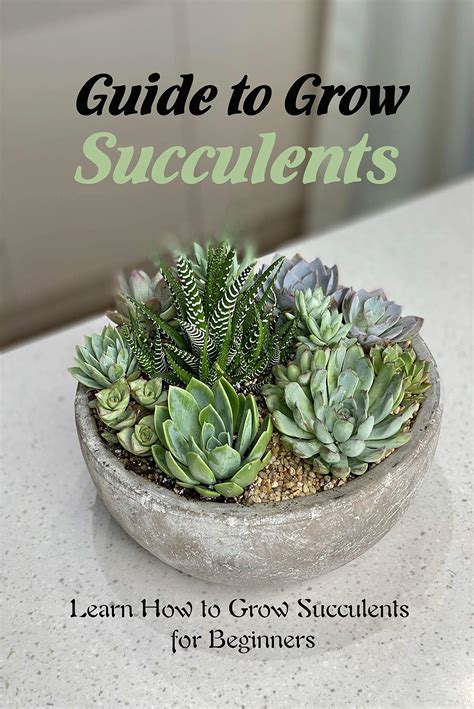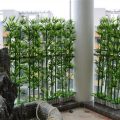The Top Succulent Choices for Beginner Gardeners on Balconies
Succulents are a fantastic choice for beginner gardeners, especially when growing them on balconies. Their resilience, low maintenance, and adaptability to different environments make them an ideal starting point for those new to gardening. This guide offers a comprehensive look at the best succulents for beginners to grow on balconies, highlighting key tips for care, selection, and ensuring proper growth. Whether you have a small or spacious balcony, these succulents will thrive and add life to your urban space.
Key Concepts: Understanding Succulent Growth and Care
Before diving into the specific varieties of succulents that are ideal for balconies, it’s essential to understand what succulents are and why they are such great plants for beginner gardeners.
- Succulents: Plants that store water in their thick, fleshy leaves or stems, allowing them to survive in arid environments.
- Resilience: Succulents can tolerate various conditions, including drought and less-than-ideal soil, making them ideal for beginners.
- Light Requirements: While many succulents thrive in bright sunlight, some are better suited for shaded or partially sunny balconies.
- Watering Needs: Succulents require minimal watering, making them low maintenance, but it’s crucial to avoid overwatering, which can lead to root rot.
- Container Choice: Proper drainage is key. Use pots with drainage holes to prevent water from accumulating in the soil.
Historical Context: The Rise of Succulent Popularity
Succulents have been grown for centuries, particularly in arid regions where water is scarce. However, their popularity surged in urban areas in the late 20th and early 21st centuries. This rise is partly due to their aesthetic appeal and ease of care, making them ideal for people living in apartments or homes with limited garden space, such as balconies. The modern trend of minimalism and indoor gardening has further boosted the popularity of succulents as they thrive in small spaces and require minimal attention.
Current State Analysis: Why Succulents Are Ideal for Balconies
Succulents are perfect for balcony gardening for several reasons:
- Space Efficiency: Succulents come in various shapes and sizes, from tiny rosette plants to larger columnar varieties, allowing them to fit into even the smallest balcony spaces.
- Low Maintenance: Their minimal watering needs and ability to thrive in a range of lighting conditions make them manageable for busy individuals or beginner gardeners.
- Decorative Appeal: The diverse forms and vibrant colors of succulents can enhance the aesthetic of a balcony, creating a natural, relaxing environment.
Practical Applications: Choosing the Right Succulents for Your Balcony
When selecting succulents for a balcony garden, consider the light exposure, climate, and available space. Here are some of the best succulents for beginners to grow on balconies:
| Succulent Type | Light Requirements | Watering Needs | Special Considerations |
|---|---|---|---|
| Aloe Vera | Bright, indirect sunlight | Water sparingly | Medicinal properties; avoid overwatering |
| Jade Plant | Bright, direct sunlight | Water when soil is dry | Can grow large over time |
| Echeveria | Full sunlight | Water every 1-2 weeks | Rosette shape; avoid getting water on leaves |
| Haworthia | Partial sunlight | Water sparingly | Small, perfect for compact spaces |
| Snake Plant | Low to bright indirect light | Water every 2-3 weeks | Hardy and tolerates neglect |
| Burro’s Tail | Bright, indirect sunlight | Water when soil is dry | Fragile leaves, handle with care |
| Panda Plant | Bright, indirect sunlight | Water when soil is dry | Unique fuzzy leaves |
| Sempervivum | Full sunlight | Water sparingly | Cold hardy, great for outdoor balconies |
| Zebra Plant | Low to bright indirect light | Water sparingly | Striped leaves, good for small spaces |
| String of Pearls | Bright, indirect sunlight | Water when soil is dry | Trailing plant, ideal for hanging baskets |
Case Studies: Successful Balcony Succulent Gardens
Here are some examples of successful balcony succulent gardens and the strategies that led to their success:
- Urban Balcony in Los Angeles: A compact balcony garden featured a variety of succulents including Aloe Vera, Echeveria, and String of Pearls. The gardener maximized space by using vertical planters and hanging baskets, ensuring each plant received adequate sunlight.
- Shaded Balcony in New York City: Although the balcony received limited direct sunlight, the use of low-light succulents like Snake Plants and Zebra Plants allowed for a thriving succulent garden. The gardener also installed reflective surfaces to increase light exposure.
- Balcony in a Cold Climate (Chicago): A combination of Sempervivum and other cold-hardy succulents ensured the garden survived harsh winters. The gardener used frost-proof pots and brought in sensitive plants like Jade during extreme cold.
Stakeholder Analysis: Who Benefits from Balcony Succulent Gardens?
Several groups benefit from the popularity of succulents in balcony gardens:
- Urban Residents: Succulents provide a green space in cities where outdoor gardens may not be possible.
- Nurseries and Plant Shops: Increased demand for low-maintenance plants like succulents has boosted sales for garden centers.
- Environmentalists: Growing plants on balconies contributes to urban biodiversity and improves air quality.
- Landlords and Property Owners: Well-maintained balcony gardens can increase the appeal of apartments and homes.
Implementation Guidelines: How to Start Your Balcony Succulent Garden
Follow these steps to successfully set up a succulent garden on your balcony:
- Assess Light Conditions: Determine how much sunlight your balcony receives daily and choose succulents that match those conditions.
- Select the Right Containers: Use pots with drainage holes to prevent water from pooling in the soil, which can cause root rot.
- Use Well-Draining Soil: Succulents require soil that drains quickly. Opt for cactus or succulent-specific soil mixes.
- Water Properly: Allow the soil to dry completely between waterings, and avoid getting water on the leaves.
- Rotate Your Plants: If sunlight exposure is uneven, rotate your succulents every few weeks to ensure even growth.
Ethical Considerations: Sustainable Succulent Sourcing
As the popularity of succulents grows, there are concerns about overharvesting certain species from the wild. To ensure ethical gardening:
- Purchase succulents from reputable growers who use sustainable practices.
- Avoid buying endangered or illegally sourced plants.
- Support local nurseries and growers whenever possible.
Limitations and Future Research
While succulents are ideal for balcony gardening, there are a few limitations to consider:
- Limited Space: Some succulents grow large over time and may eventually outgrow small balcony spaces.
- Climate Restrictions: Extreme weather conditions, such as freezing temperatures or high humidity, can be challenging for some succulents. More research is needed on hybrid varieties that can withstand a broader range of climates.
- Pest Issues: Though generally resilient, succulents are not immune to pests like mealybugs or aphids, which may require additional attention.
Expert Commentary
Experts agree that succulents offer a beginner-friendly way to start a balcony garden. Their versatility and low-maintenance nature make them a perfect choice for urban environments. However, they stress the importance of understanding individual plant needs, particularly light and water requirements. For the future, there is increasing interest in breeding succulent varieties that can thrive in diverse climates, ensuring these plants remain accessible to gardeners worldwide.


